A new type of urban landmark at the intersection of landscape and architecture
Shanghai has taken a significant step towards sustainable urban development with the unveiling of the Baoshan Waste-to-Energy (WTE) Center, designed by Ballistic Architecture Machine (BAM). Located on a former blast furnace site, the facility plays a vital role in the city's carbon reduction strategy—diverting waste from landfills and saving an estimated 3 million tons of CO₂ emissions annually. The center exemplifies a forward-thinking model for circular economy infrastructure by combining advanced waste-processing technologies with architectural innovation and public engagement.
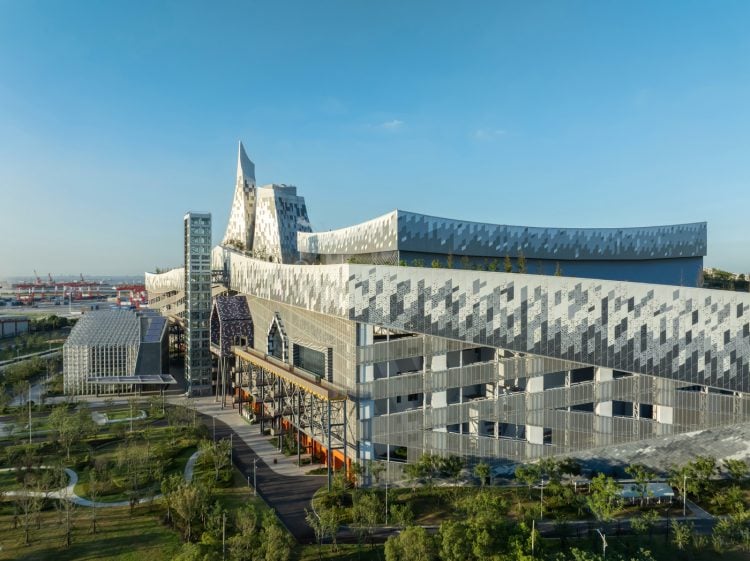
Panoramic daylight view of the Baoshan Waste-to-Energy Center, showing integration of industrial functions, public amenities, and green rooftop landscape.
Photo credit: Derryck Menere
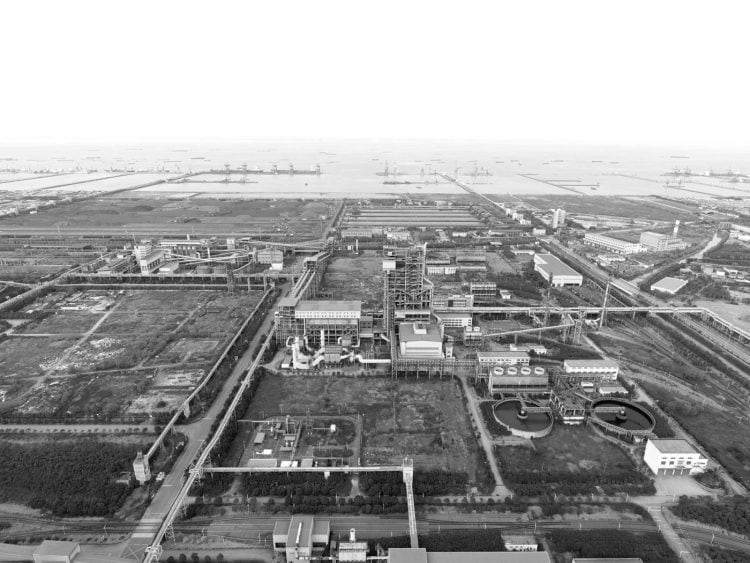
Aerial view of the former steel plant site which once emitted massive greenhouse gases, now transformed into the Baoshan Waste-to-Energy Center.
Photo credit: BAM
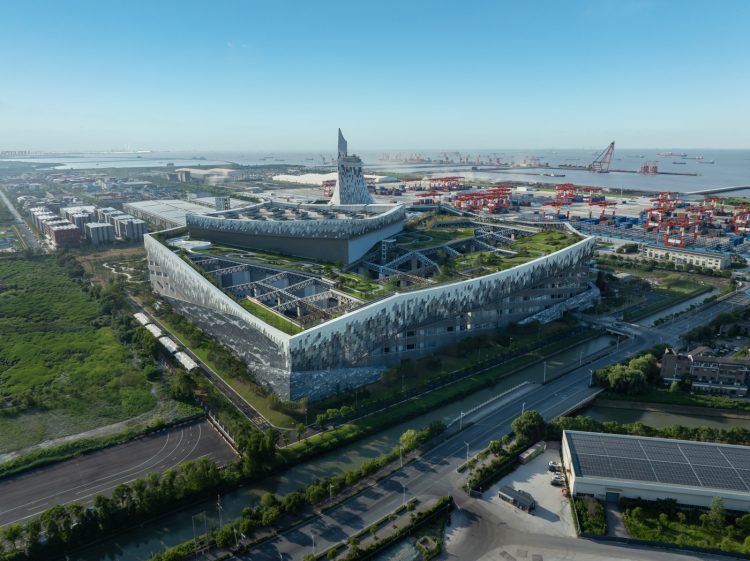
Aerial view of the Baoshan Waste-to-Energy Center, where a 4-hectare rooftop park crowns a state-of-the-art waste recovery facility.
Photo credit: Derryck Menere
The 128,000-square-meter complex features two primary waste-processing systems: a high-capacity incinerator that generates electricity and an anaerobic digestion unit that produces biogas from organic waste. These systems can handle 3,000 tons of dry and 8,000 tons of organic waste per day. Rather than isolating the industrial components, BAM integrates them into a larger urban design strategy that blurs the boundaries between landscape, architecture, and public space.
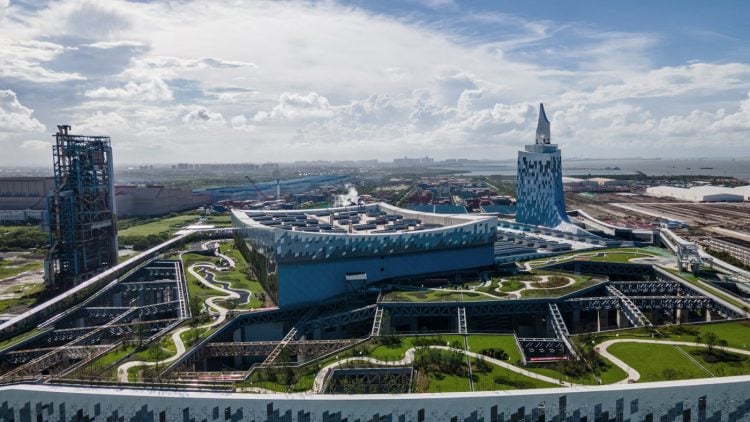
Winding trail loops through the Baoshan Waste-to-Energy Center’s freshly planted 4-hectare rooftop park, offering panoramic views of the urban landscape.
Photo credit: Beidouxing
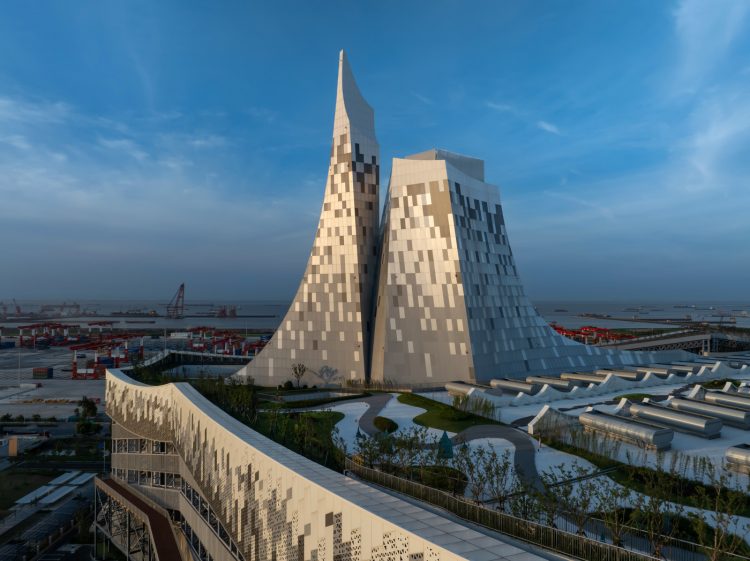
Spire chimney towers mark the culmination of the waste-to-energy process, rising above the rooftop park.
Photo credit: Derryck Menere
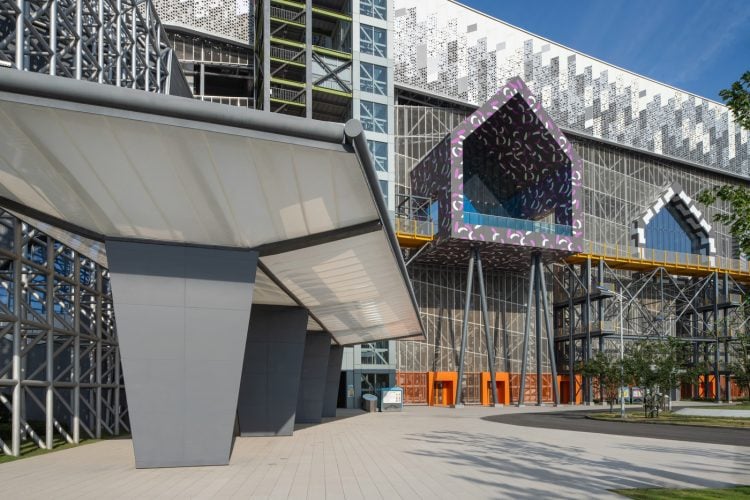
Entrance plaza at the Museum of Waste, featuring “mini-city” volumes integrated into the industrial façade.
Photo credit: Derryck Menere
Instead of following conventional industrial design, the facility avoids the typical “decorated shed” approach. BAM reimagines the site as a lifted landscape park that conceals the industrial functions beneath a porous architectural shell. The building’s roof features large fire-safety openings, creating a partially open structure that reads more like a geological formation than a traditional structure. From a distance, the facility appears as a monumental, sculptural landform, while the roof doubles as a 4-hectare green park accessible to the public. This park not only conceals industrial operations but also fosters community interaction, education, and recreation, transforming the facility into a civic landmark.
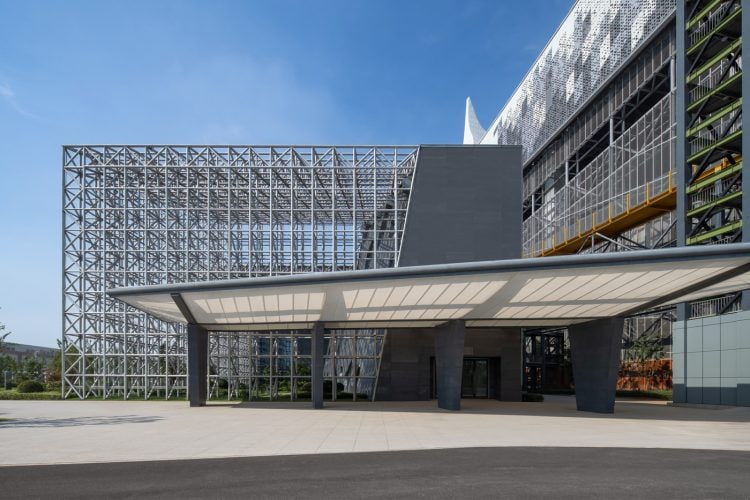
Visitor drop-off area at the Baoshan Waste-to-Energy Center, protected by a translucent ETFE canopy.
Photo credit: Derryck Menere
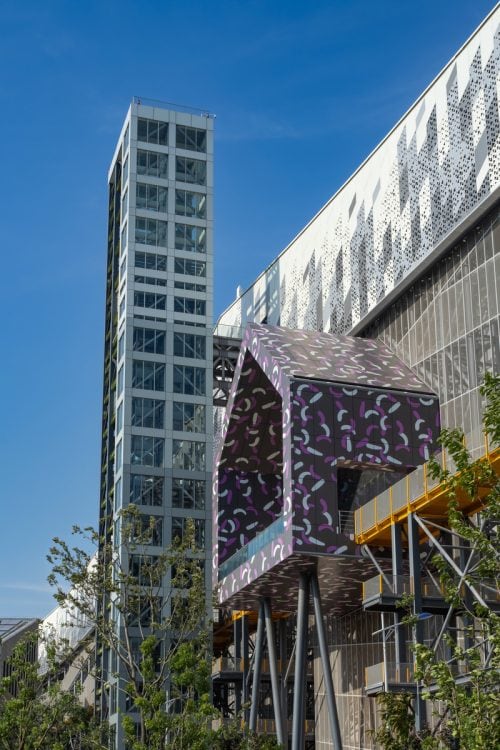
Industrial lift links the elevated catwalk and the Musem of Waste’s rooftop park.
Photo credit: Derryck Menere
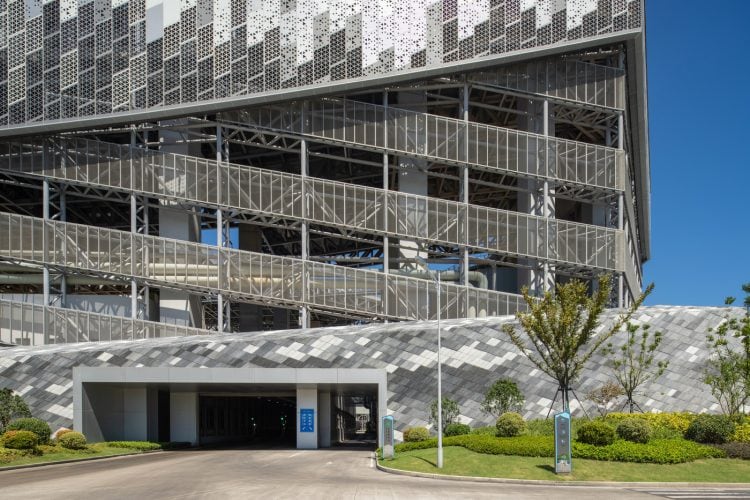
Waste collection vehicles pass through a façade portal into sealed service ramps, minimizing odor emissions.
Photo credit: Derryck Menere
A key element of the project is public education. The Museum of Waste takes visitors—particularly school groups—on an immersive journey called the “Story of Trash.” Through thematic, time-travel-style exhibits, it traces the origins of waste from prehistoric times to the Industrial Revolution, the advent of plastics, and the digital age. This narrative framework helps visitors understand the scope of the waste problem while encouraging reflection on their own environmental impact.
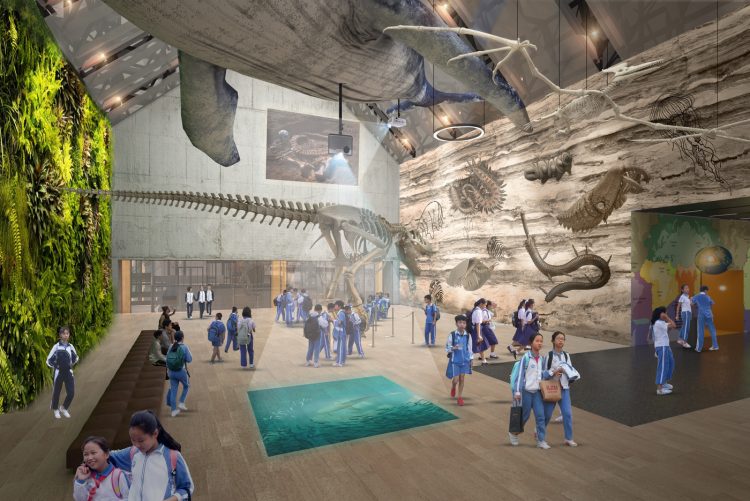
Rendering of the Museum of Waste’s Entrance Hall, where thematic displays on the origins of fossil fuels immerse visitors in the “Story of Trash.”
Photo credit: BAM
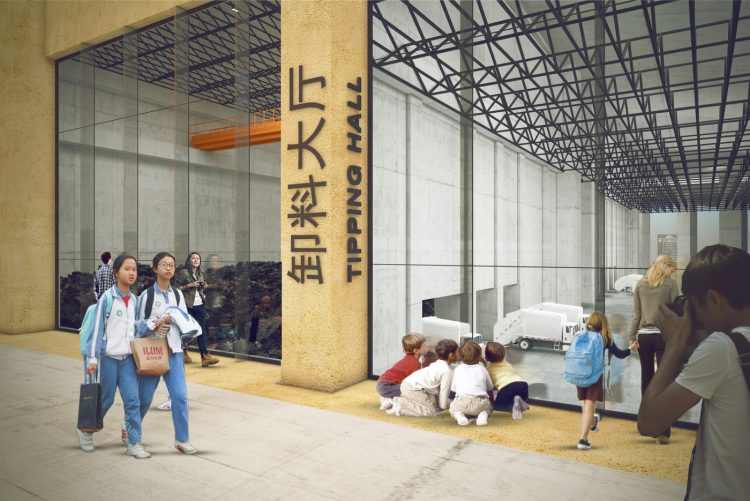
Rendering of the Tipping Hall on the plant tour, where visitors watch waste trucks unload through a glazed observation wall.
Photo credit: BAM
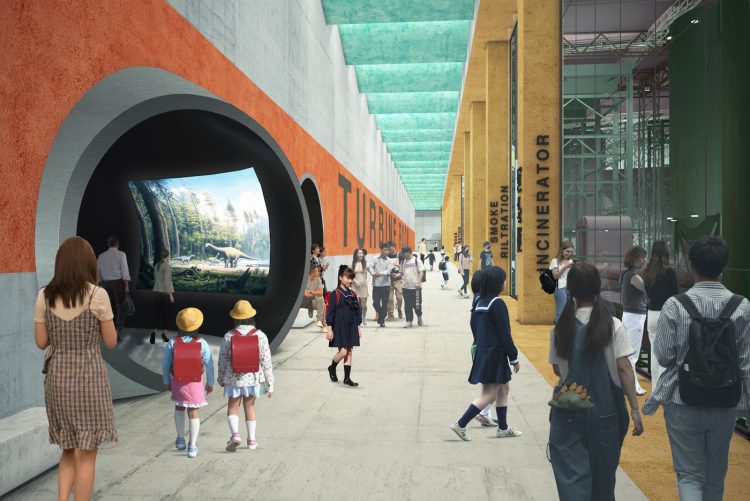
Rendering of the plant tour’s incineration and filtration zone, where visitors walk alongside operating turbines and observe emission control systems through glass partitions.
Photo credit: BAM
The educational experience continues in the WTE Experience Hall, where visitors observe real-time waste processing operations. This includes viewing cranes transporting waste, observing control room operations, and understanding incineration and energy generation processes. A multimedia presentation in the turbine room dramatizes the entire waste lifecycle. The final stop is the rooftop park, where canyon-like openings offer glimpses into the processing systems below, symbolizing the transparency and integration of industry within the urban fabric.
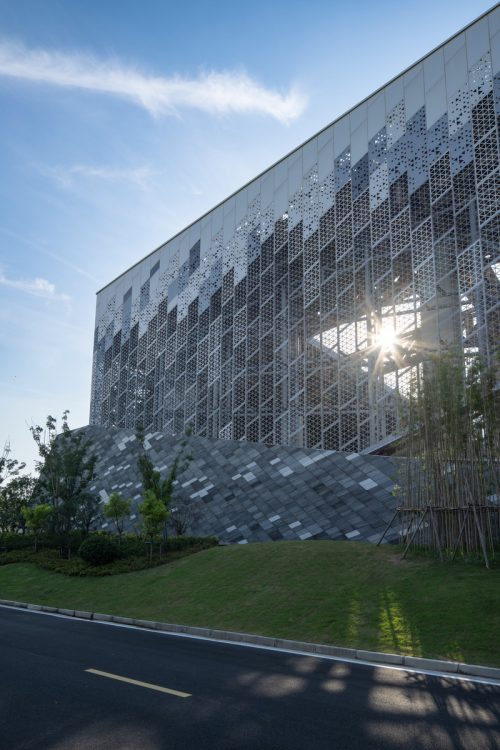
Sunlight filters through the perforated façade, designed for airflow to the industrial programs within.
Photo credit: Derryck Menere

Detail of solid concrete façade panels, their pattern derived from mountain-range photography.
Photo credit: Derryck Menere
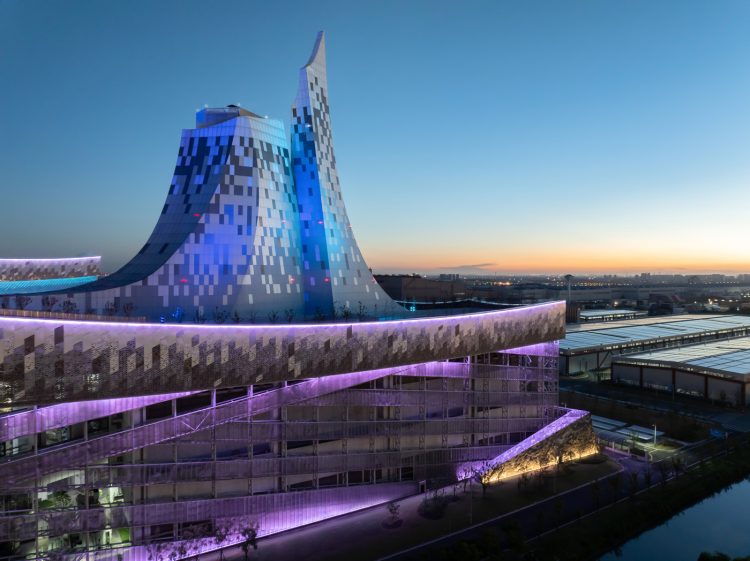
Twilight illumination underscores the interplay of industrial infrastructure and rooftop landscape at the Baoshan Waste-to-Energy Center.
Photo credit: Derryck Menere
By placing waste-processing infrastructure at the heart of the city—and making it visible, accessible, and educational—the Baoshan WTE Center challenges the stigma typically associated with such facilities. It actively addresses the NIMBY (Not-In-My-Backyard) mindset by demonstrating that waste infrastructure can be clean, safe, and even beautiful. The long-term vision is not just technological sustainability, but a societal shift toward a zero-waste circular economy. In this vision, the WTE facility becomes obsolete as waste itself disappears, leaving behind a civic space that continues to serve the community.
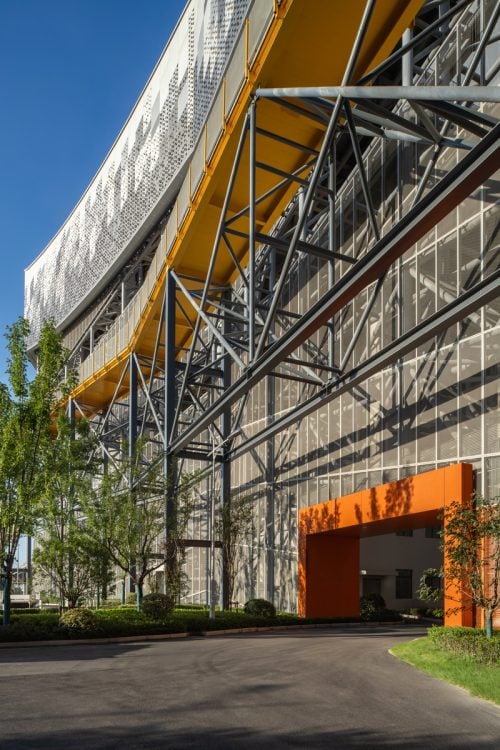
Detail of the perforated façade’s structural framework and elevated walkway, highlighting the interplay of transparency and industrial form.
Photo credit: Derryck Menere
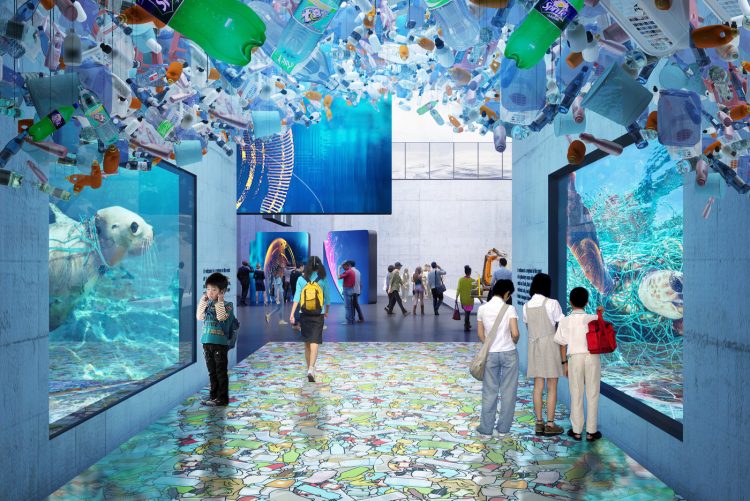
Rendering of the “Plastic Planet” gallery in the Museum of Waste, where suspended plastic debris and immersive displays highlight marine pollution.
Photo credit: BAM
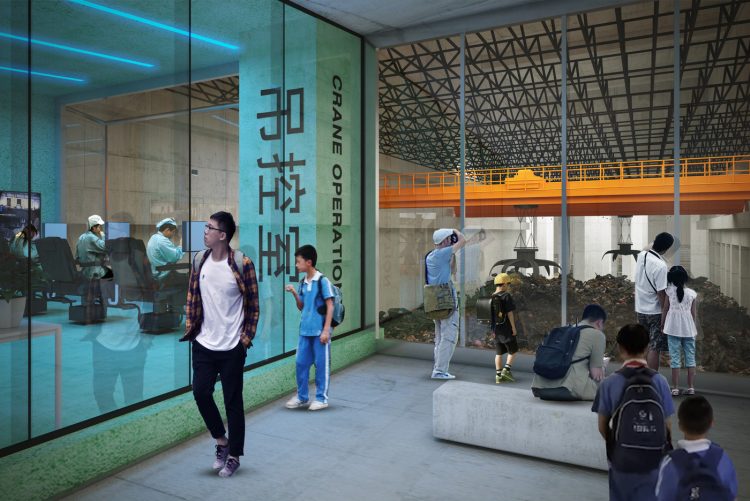
Visitors observing the gantry crane operation from the control room, showcasing the mechanical handling of waste in the Baoshan facility.
Photo credit: BAM
The Baoshan WTE Center is more than an energy plant—it is a new typology for urban infrastructure. By fusing utility with education, architecture with landscape, and function with beauty, it represents a hopeful and innovative approach to the future of sustainable cities.
Ballistic Architecture Machine (BAM)
Ballistic Architecture Machine (BAM) is a multidisciplinary design studio committed to the design of urban landscapes. BAM has been listed as Global Top 100 at Kyoto Design Awards, received Special Mention as the Best Landscape Studio of the Year at the 2024 Architizer A+ Awards, and operates internationally from offices in Beijing and Shanghai.

 English
English 日本語
日本語
